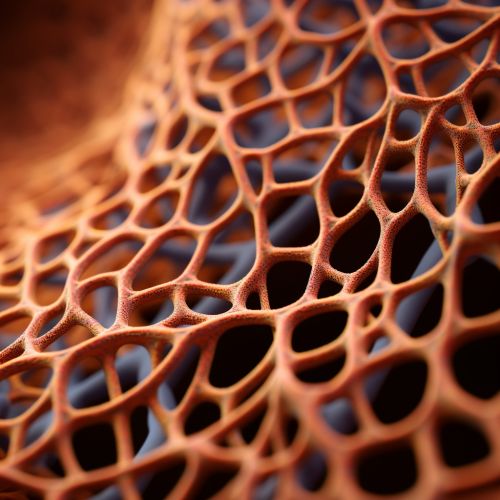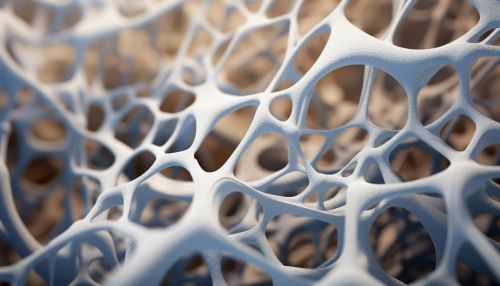Biomaterial
Introduction
Biomaterials are substances that have been engineered to interact with biological systems for a medical purpose - either a therapeutic (treat, augment, repair or replace a tissue function of the body) or a diagnostic one. As a science, biomaterials is about fifty years old. The study of biomaterials is called biomaterials science or engineering. It has experienced steady and strong growth over its history, with many companies investing large amounts of money into the development of new products. Biomaterials science encompasses elements of medicine, biology, chemistry, tissue engineering and materials science.
Classification of Biomaterials
Biomaterials can be classified in two ways. First, based on their nature of interaction with the host tissue, they can be classified as bioinert, bioactive or resorbable. Second, based on the type of material, they can be classified as polymers, metals, ceramics, and composite materials.
Bioinert Biomaterials
Bioinert Biomaterials are designed to minimize interaction with the surrounding tissue. They are typically used in applications where a physical function is required, such as joint replacement. Examples of bioinert materials include titanium and alumina.
Bioactive Biomaterials
Bioactive Biomaterials interact with the body by forming a bond with the surrounding tissue. This is typically achieved by incorporating a bioactive substance into the material. Examples of bioactive materials include hydroxyapatite coated titanium and bioactive glass.
Resorbable Biomaterials
Resorbable Biomaterials are designed to degrade and disappear after they have served their function. This is typically achieved by using materials that can be broken down and metabolized by the body. Examples of resorbable materials include polylactic acid and polyglycolic acid.
Polymers
Polymers are a large class of materials consisting of many repeating subunits. They can be natural or synthetic, and are typically very versatile. Examples of polymers used in biomaterials include polyethylene, polydimethylsiloxane, and polycaprolactone.
Metals
Metals are often used in biomaterials due to their strength and durability. They can be used in their pure form or as alloys. Examples of metals used in biomaterials include titanium, stainless steel, and cobalt-chrome alloy.
Ceramics
Ceramics are hard, brittle materials that are often used in orthopedic and dental applications. They can be bioinert or bioactive. Examples of ceramics used in biomaterials include alumina, zirconia, and hydroxyapatite.
Composite Materials
Composite Materials are made from two or more different types of materials, which allows for the combination of the best properties of each. Examples of composite materials used in biomaterials include carbon fiber reinforced polyetheretherketone and hydroxyapatite reinforced polyethylene.


Applications of Biomaterials
Biomaterials are used in a variety of medical applications, including orthopedic surgery, dental applications, drug delivery, and tissue engineering.
Orthopedic Surgery
In Orthopedic Surgery, biomaterials are used to replace or augment the function of the musculoskeletal system. This includes joint replacement, spinal fusion, and fracture fixation.
Dental Applications
In Dental Applications, biomaterials are used to replace or repair teeth and other structures in the oral cavity. This includes dental implants, crowns, and bridges.
Drug Delivery
In Drug Delivery, biomaterials are used to deliver drugs to specific locations in the body. This can be achieved by incorporating the drug into the material, or by using the material to encapsulate the drug.
Tissue Engineering
In Tissue Engineering, biomaterials are used as scaffolds to support the growth of new tissue. This can be used to replace or repair damaged tissue, or to create new tissue for transplantation.
Challenges and Future Directions
Despite the many advances in biomaterials science, there are still many challenges to be overcome. These include the development of materials that can mimic the complex structure and function of natural tissues, the design of materials that can respond to biological signals, and the development of materials that can resist infection and inflammation.
Looking to the future, it is likely that biomaterials will continue to play a critical role in the advancement of medicine. With the development of new materials and technologies, it is expected that the field of biomaterials will continue to grow and evolve.
